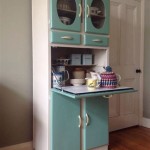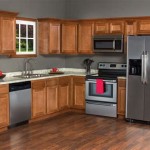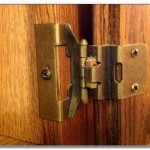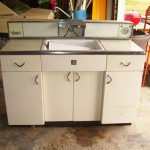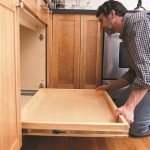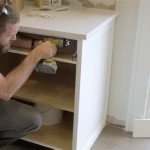Chalk Paint Kitchen Cabinets: A Dramatic Before and After Transformation
Kitchen cabinets often represent a significant portion of a kitchen's overall aesthetic and functionality. Over time, cabinets can become outdated, worn, or simply no longer align with the homeowner's evolving style preferences. Replacing cabinets entirely can be a costly and disruptive undertaking. A more budget-friendly and DIY-friendly alternative is to refinish them using chalk paint. Chalk paint offers a unique matte finish, excellent adhesion, and ease of application, making it a popular choice for cabinet transformations. The "before and after" results of chalk-painted kitchen cabinets can be truly remarkable, breathing new life into a tired kitchen and significantly altering its overall atmosphere.
This article will delve into the process of transforming kitchen cabinets with chalk paint, highlighting the distinct advantages of this method and providing a detailed overview of the steps involved, from preparation to finishing. It will also discuss various design considerations and troubleshooting tips to ensure a successful and aesthetically pleasing outcome.
Benefits of Using Chalk Paint on Kitchen Cabinets
Chalk paint has gained considerable popularity for furniture and cabinet refinishing due to several key advantages. One of the most significant benefits is its exceptional adhesion. Unlike traditional paints, chalk paint typically requires minimal surface preparation. In many cases, extensive sanding or priming is unnecessary, a factor that significantly reduces the time and effort involved in the project. This is because chalk paint is formulated to adhere to a variety of surfaces, including wood, laminate, and even metal, with minimal pre-treatment.
Another significant advantage of chalk paint is its ease of application. The paint is thick and creamy, making it easy to spread evenly and control drips. This characteristic is particularly beneficial for DIYers with limited experience in painting. The matte finish of chalk paint is also forgiving, as it tends to conceal minor imperfections in the surface of the cabinets. The opacity of the paint allows for excellent coverage, often requiring only one or two coats to achieve the desired color and finish. Furthermore, chalk paint dries relatively quickly, allowing for faster project completion and minimizing downtime in the kitchen.
Beyond its practical benefits, chalk paint offers a wide range of aesthetic possibilities. It is available in a diverse palette of colors, from soft neutrals to vibrant hues, enabling homeowners to customize their cabinets to perfectly match their design vision. Chalk paint can also be easily distressed to create a vintage or shabby chic look, adding character and charm to the kitchen. The matte finish provides a unique texture and depth that is difficult to achieve with other types of paint. Finally, chalk paint is often considered more environmentally friendly than traditional paints, as it typically contains low levels of volatile organic compounds (VOCs), contributing to better indoor air quality.
Step-by-Step Guide to Chalk Painting Kitchen Cabinets
The process of chalk painting kitchen cabinets can be broken down into several key steps, each crucial to achieving a professional and long-lasting finish. Proper preparation is crucial for the project's success. Start by removing all hardware from the cabinet doors and drawers, including knobs, pulls, and hinges. This will ensure a clean and even paint application. Thoroughly clean the cabinet surfaces with a degreasing cleaner to remove any grease, grime, or dirt that may interfere with adhesion. A mild solution of soap and water can also be used, followed by rinsing and drying.
While chalk paint often requires minimal sanding, it is advisable to lightly sand any glossy or particularly smooth surfaces to create a better grip for the paint. Use fine-grit sandpaper (e.g., 220-grit) and gently scuff the surface. Wipe away any sanding dust with a tack cloth. In some cases, priming may be necessary, especially if the cabinets are stained with a dark color or made of a slick material like laminate. Use a high-quality primer designed for cabinets and follow the manufacturer's instructions for application and drying time. Once the preparation is complete, it's time to begin painting.
Apply the first coat of chalk paint using a high-quality brush or roller. A brush is ideal for detailed areas and corners, while a roller can be used for larger, flat surfaces. Apply the paint evenly, working in thin coats to avoid drips and runs. Allow the first coat to dry completely according to the manufacturer's instructions. This is a critical step, as applying subsequent coats to wet paint can lead to uneven coverage and a poor finish. Once the first coat is dry, lightly sand the surface with fine-grit sandpaper to smooth out any imperfections. Wipe away any sanding dust with a tack cloth.
Apply a second coat of chalk paint, using the same technique as the first. Depending on the desired color and coverage, a third coat may be necessary. Again, allow each coat to dry completely before applying the next. Once the final coat is dry, it is essential to seal the chalk paint to protect it from wear and tear, especially in a high-traffic area like the kitchen. Chalk paint is porous and can easily stain or scratch if not properly sealed. There are several options for sealing chalk paint, including wax, polyurethane, and lacquer.
Wax is a popular choice for sealing chalk paint, as it provides a soft, matte finish and is easy to apply. Apply the wax with a brush or cloth, working it into the paint in a circular motion. Buff the surface with a clean cloth to remove any excess wax and create a smooth, protective layer. Polyurethane is a more durable option for sealing chalk paint, providing better protection against moisture and scratches. It is available in both water-based and oil-based formulations. Water-based polyurethane is generally preferred for its low odor and easy cleanup. Apply polyurethane in thin, even coats, following the manufacturer's instructions for application and drying time. Lacquer is the most durable option for sealing chalk paint, providing the best protection against wear and tear. However, it is also the most challenging to apply and requires proper ventilation. Lacquer is typically applied with a spray gun and requires multiple coats. Once the sealant is dry, reattach the hardware to the cabinet doors and drawers. This is the final step in the transformation process.
Design Considerations and Troubleshooting
Before embarking on a chalk paint kitchen cabinet transformation, it is crucial to consider various design elements to ensure a cohesive and aesthetically pleasing result. Color selection is paramount. Consider the existing color scheme of the kitchen, including the countertops, backsplash, flooring, and appliances. Choose a chalk paint color that complements these elements and creates the desired mood and atmosphere. Lighter colors can brighten up a small or dark kitchen, while darker colors can add drama and sophistication. Neutral colors are a safe and versatile choice that can easily be paired with other colors and styles.
Hardware selection is another important design consideration. Replace the existing hardware with new knobs and pulls that complement the chalk paint color and overall style of the kitchen. Consider the material, finish, and shape of the hardware to create a cohesive and visually appealing look. Distressing the finish is another design element to consider. Chalk paint is easily distressed, allowing for the creation of a vintage or shabby chic look. Use sandpaper or a damp cloth to remove paint from edges and corners, revealing the underlying wood or paint layers. Distressing can add character and charm to the cabinets and create a unique, personalized look.
Despite careful planning and execution, some common issues may arise during the chalk painting process. One common problem is uneven paint coverage. This can be caused by applying the paint too thinly or unevenly. To remedy this, apply additional coats of paint, ensuring that each coat is applied evenly and allowed to dry completely before applying the next. Another common issue is brushstrokes. Brushstrokes can be minimized by using a high-quality brush and applying the paint in long, even strokes. Lightly sanding the surface between coats can also help to smooth out any brushstrokes.
Chipping or peeling paint can occur if the surface is not properly prepared or if the sealant is not applied correctly. To prevent chipping or peeling, thoroughly clean and prepare the surface before painting, and apply a high-quality sealant after painting. If chipping or peeling occurs, sand the affected area and reapply the paint and sealant. Additionally, yellowing of the paint over time can occur, especially with lighter colors. This can be caused by exposure to sunlight or grease. To prevent yellowing, use a high-quality sealant with UV protection and regularly clean the cabinets with a mild detergent.
Ultimately, the transformation of kitchen cabinets with chalk paint can be a rewarding and cost-effective way to update the kitchen. By carefully planning the project, preparing the surfaces properly, and following the steps outlined above, the homeowner can achieve professional-looking results and create a kitchen that is both beautiful and functional. The "before and after" transformation can be truly remarkable, significantly enhancing the overall aesthetic and value of the home.

Painting Kitchen Cabinets With Chalk Paint Simply Today Life

Before And After Kitchen Cabinet Makeover With Annie Sloan Chalk Paint In Old Ochre Cabinets Painting

Chalk Painted Kitchen Cabinets 2 Years Later Our Storied Home

Are Your Kitchen Cabinets Dated Before After Photos The Purple Painted Lady

Kitchen Cabinets Before And After Chalk Paint Painting White

Why I Repainted My Chalk Painted Cabinets Sincerely Sara D Home Decor Diy Projects

How I Chalk Painted My Kitchen Cabinets

How To Paint Kitchen Cabinets White Let S Furniture

Step By Kitchen Cabinet Painting With Annie Sloan Chalk Paint Jeanne Oliver

How To Paint Your Kitchen Cabinets With Chalk Dwell Beautiful


